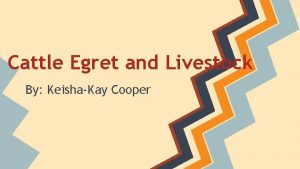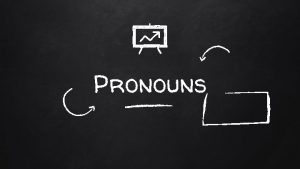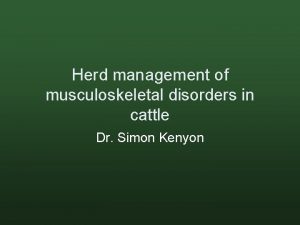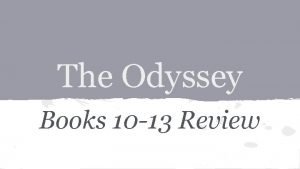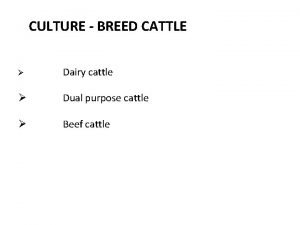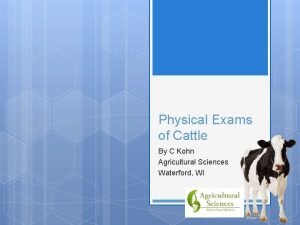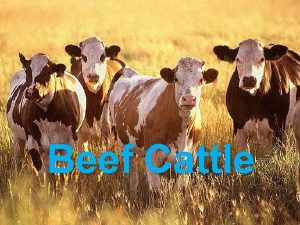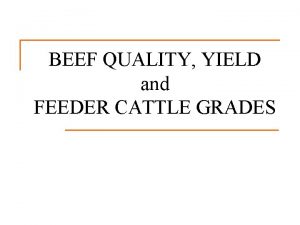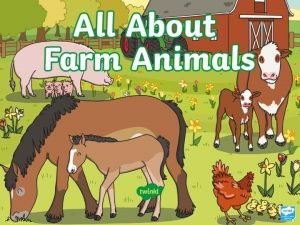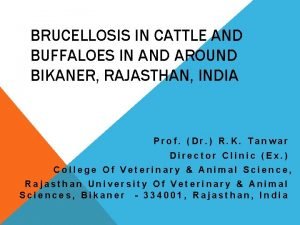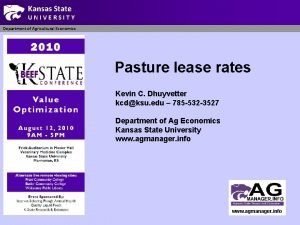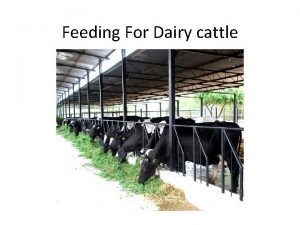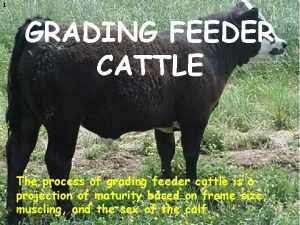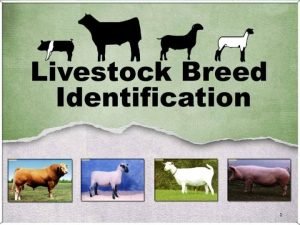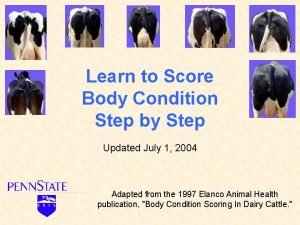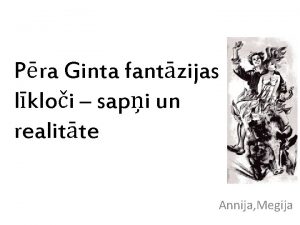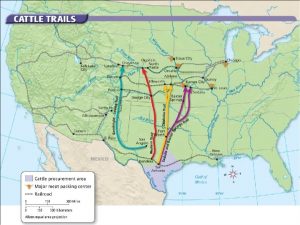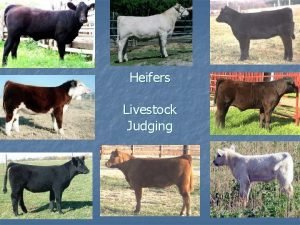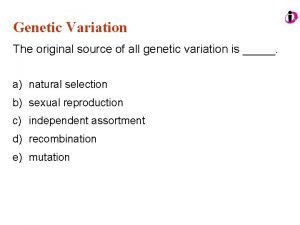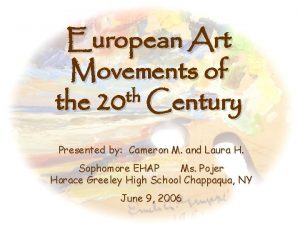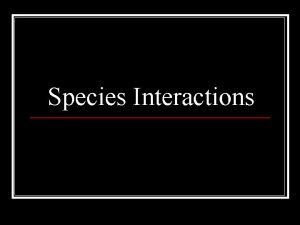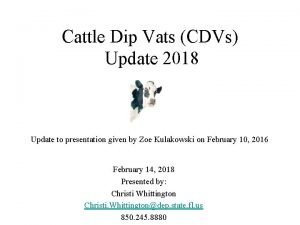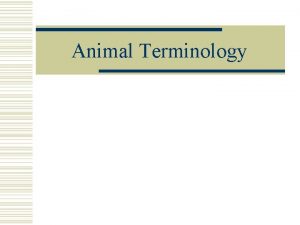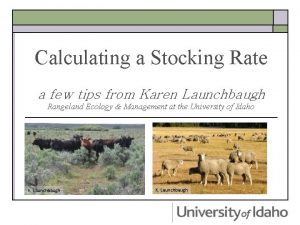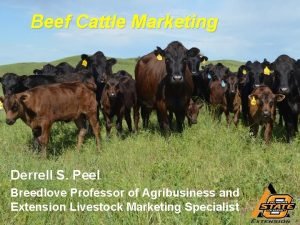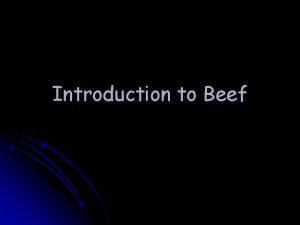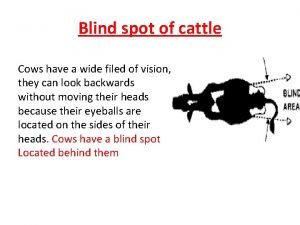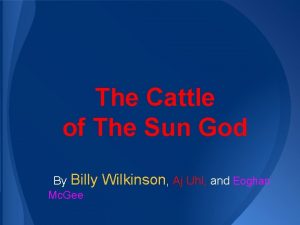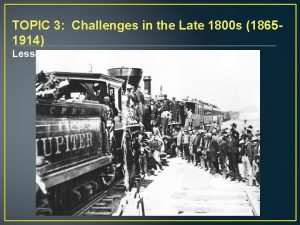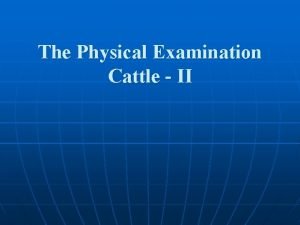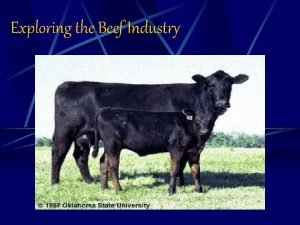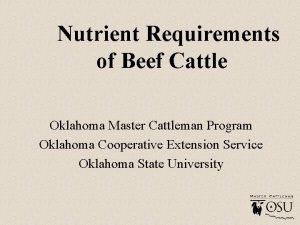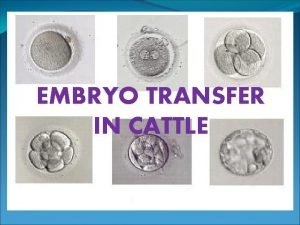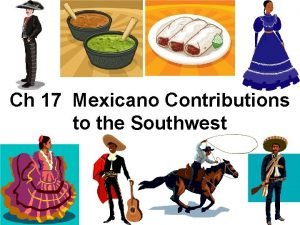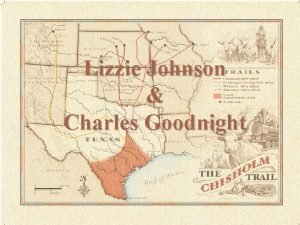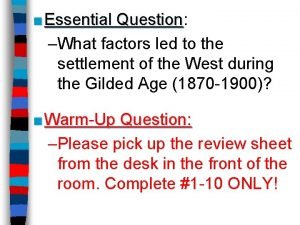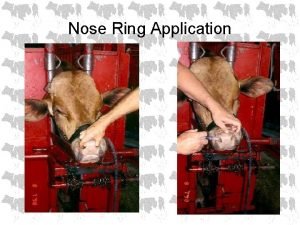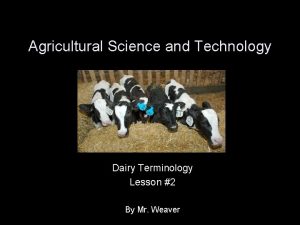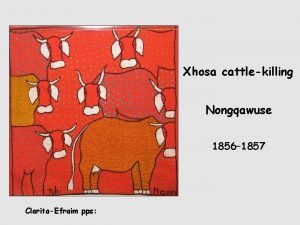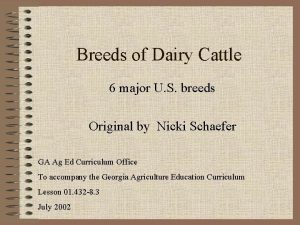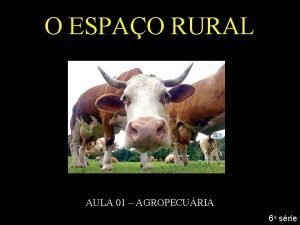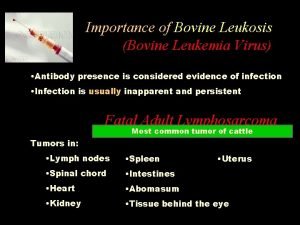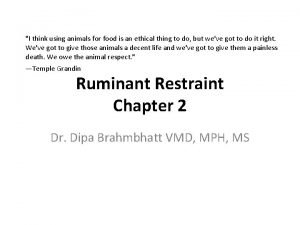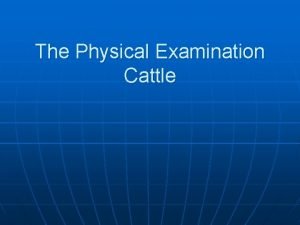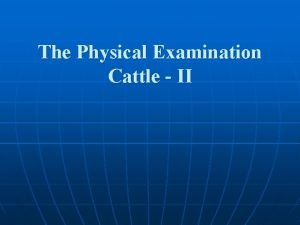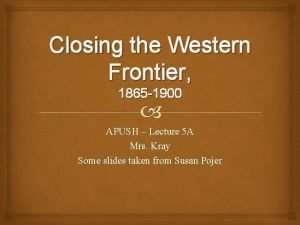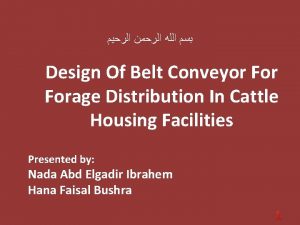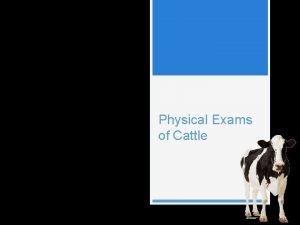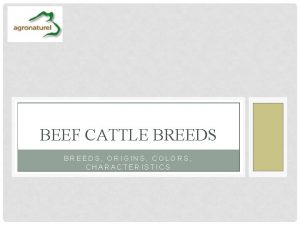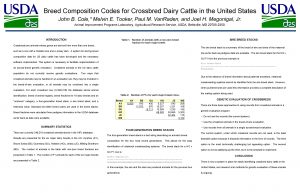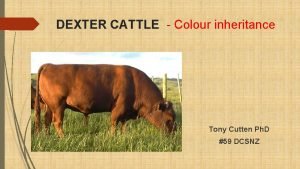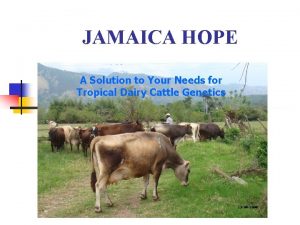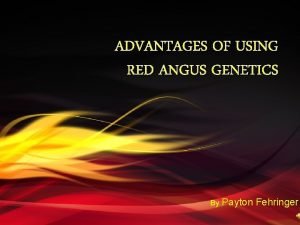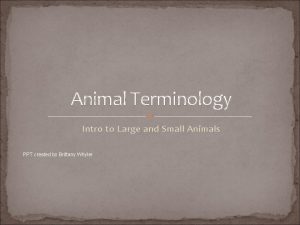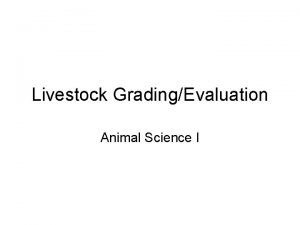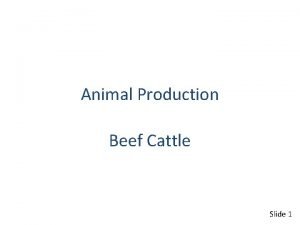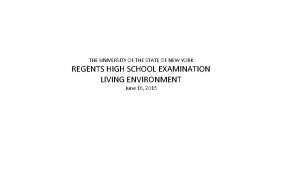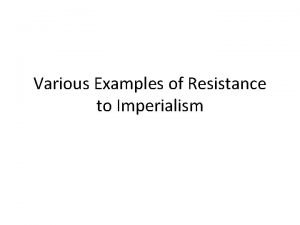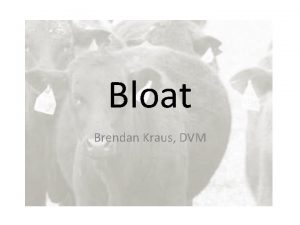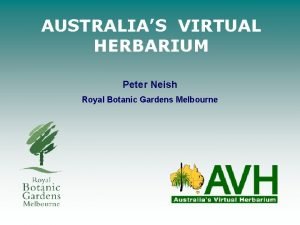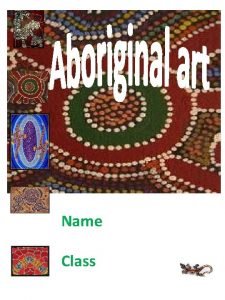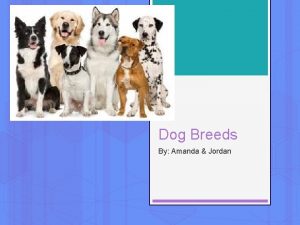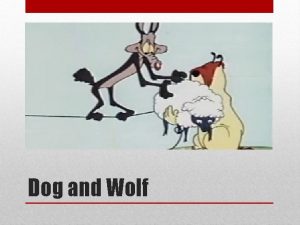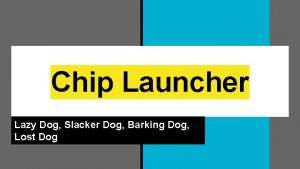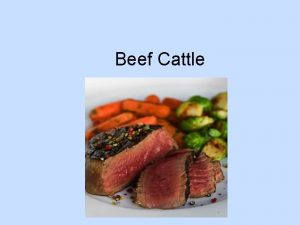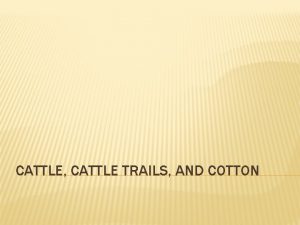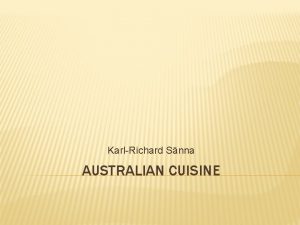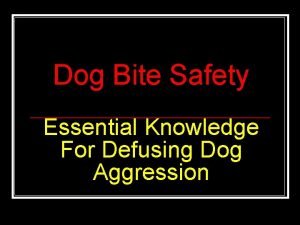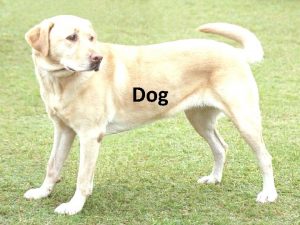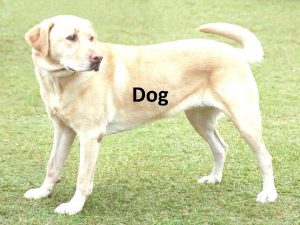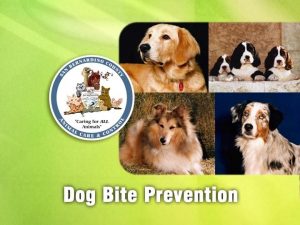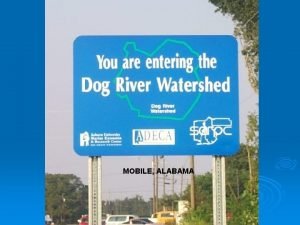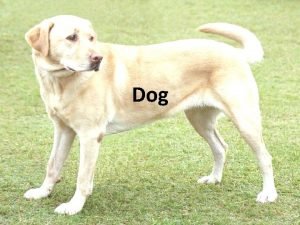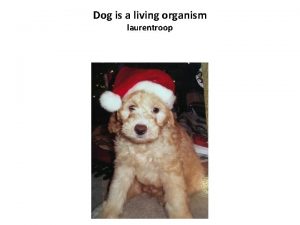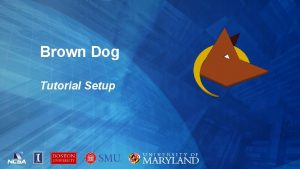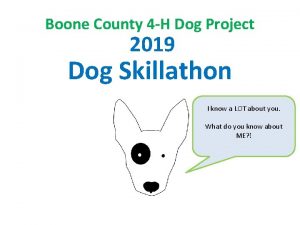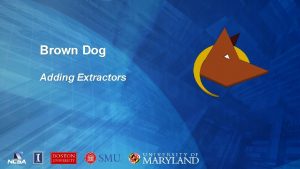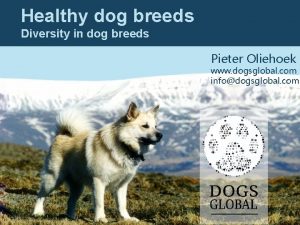AUSTRALIAN CATTLE DOG AUSTRALIAN CATTLE DOG Australian Cattle














































































- Slides: 78

AUSTRALIAN CATTLE DOG

AUSTRALIAN CATTLE DOG

Australian Cattle Dog • • • Herding Group Ranging in size from 17 to 20 inches tall at the shoulder. Cattle herder, livestock guardian. Coat The coat is smooth, a double coat with a short dense undercoat. The outer-coat is close, each hair straight, hard, and lying flat, so that it is rain-resisting. Under the body, to behind the legs, the coat is longer and forms near the thigh a mild form of breeching. On the head (including the inside of the ears), to the front of the legs and feet, the hair is short. Along the neck it is longer and thicker. As an average, the hairs on the body should be from 2. 5 to 4 cms (approx. 1 -1. 5 ins) in length. Color (Blue) The color should be blue, blue-mottled or blue speckled with or without other markings. The permissible markings are black, blue or tan markings on the head, evenly distributed for preference. The forelegs tan midway up the legs and extending up the front to breast and throat, with tan on jaws; the hindquarters tan on inside of hindlegs, and inside of thighs, showing down the front of the stifles and broadening out to the outside of the hindlegs from hock to toes. Tan undercoat is permissible on the body providing it does not show through the blue outer coat. Black markings on the body are not desirable. Color (Red Speckle) The color should be of good even red speckle all over, including the undercoat, (neither white nor cream), with or without darker red markings on the head. Even head markings are desirable. Red markings on the body are permissible but not desirable.

BASSETT HOUND

BASSETT HOUND

BASSETT HOUND Hound Group Height should not exceed 14 inches tall at the shoulder. Hunting dog; trailing dog. Coat The coat is hard, smooth, and short, with sufficient density to be of use in all weather. The skin is loose and elastic. A distinctly long coat is a disqualification. • Color Any recognized hound color is acceptable and the distribution of color and markings is of no importance. • Disqualifications Height of more than 15 inches at the highest point of the shoulder blade. Knuckled over front legs. Distinctly long coat. • •

BEAGLE

BEAGLE

BEAGLE Hound Group Must be 15 inches tall or under. Rabbit/hare hunter, family pet Coat A close, hard, hound coat of medium length. Defects-A short, thin coat, or of a soft quality. • Color Any true hound color. • General Appearance A miniature Foxhound, solid and big for his inches, with the wear-and-tear look of the hound that can last in the chase and follow his quarry to the death. • •

BLOODHOUND

BLOODHOUND

BLOODHOUND • Hound Group • Ranging in size from 23 to 27 inches tall at the shoulder. • Scent tracker. • Color The colors are black and tan, liver and tan, and red; the darker colors being sometimes interspersed with lighter or badger-colored hair, and sometimes flecked with white. A small amount of white is permissible on chest, feet, and tip of stern.

BORDER COLLIE

BORDER COLLIE

• • • BORDER COLLIE Herding Group Ranging in size from 18 to 22 inches tall at the shoulder. Sheep herder. Coat Two varieties are permissible, both having close-fitting, dense, weather resistant double coats with the top coat either straight or wavy and coarser in texture than the undercoat which is soft, short and dense. The rough variety is medium in length without being excessive. Forelegs, haunches, chest and underside are feathered and the coat on face, ears, feet, fronts of legs is short and smooth. . Color The Border Collie appears in all colors or combination of colors and/or markings. Solid color, bi-color, tri-color, merle and sable dogs are to be judged equally with no one color or pattern preferred over another. White markings may be clear white or ticked to any degree. Random white patches on the body and head are permissible but should not predominate. Color and markings are always secondary to physical evaluation and gait.

BOXER

BOXER

BOXER • Working Group • Ranging in size from 21 ½ inches to 25 inches tall at the shoulder. • Large game hunter, guard and companion dog. • Coat Short, shiny, lying smooth and tight to the body. • Color The colors are fawn and brindle. Fawn shades vary from light tan to mahogany. The brindle ranges from sparse but clearly defined black stripes on a fawn background to such a heavy concentration of black striping that the essential fawn background color barely, although clearly, shows through (which may create the appearance of reverse brindling). White markings, if present, should be of such distribution as to enhance the dog's appearance, but may not exceed one-third of the entire coat.

BULLDOG

BULLDOG

• • • BULLDOG Non-Sporting Group Ranging in size from 40 to 50 pounds. Family companion. Coat and Skin Coat--The coat should be straight, short, flat, close, of fine texture, smooth and glossy. (No fringe, feather or curl. ) Skin--The skin should be soft and loose, especially at the head, neck and shoulders. Wrinkles and Dewlap--The head and face should be covered with heavy wrinkles, and at the throat, from jaw to chest, there should be two loose pendulous folds, forming the dewlap. Color of Coat The color of coat should be uniform, pure of its kind and brilliant. The various colors found in the breed are to be preferred in the following order: (1) red brindle, (2) all other brindles, (3) solid white, (4) solid red, fawn or fallow, (5) piebald, (6) inferior qualities of all the foregoing. Nose--The nose should be large, broad and black, its tip set back deeply between the eyes. The distance from bottom of stop, between the eyes, to the tip of nose should be as short as possible and not exceed the length from the tip of nose to the edge of underlip. The nostrils should be wide, large and black, with a well-defined line between them.

Chihahua

CHIHAHUA

CHIHUAHUA • Toy Group. • Not more than 6 pounds. • Companion dog. • Coat In the Smooth Coats, the coat should be of soft texture, close and glossy. (Heavier coats with undercoats permissible. ) Coat placed well over body with ruff on neck preferred, and more scanty on head and ears. Hair on tail preferred furry. In Long Coats, the coat should be of a soft texture, either flat or slightly wavy, with undercoat preferred. Ears – Fringed. Tail – Full and long (as a plume). Feathering on feet and legs, pants on hind legs and large ruff on the neck desired and preferred. • Color Any color - Solid, marked or splashed.

Chow

CHOW

CHOW • • • Non-Sporting Group Ranging in size from 17 to 20 inches tall at the shoulder. Hunter; guard dog. Coat There are two types of coat; rough and smooth. Both are double coated. Rough In the rough coat, the outer coat is abundant, dense, straight and offstanding, rather coarse in texture; the undercoat soft, thick and wooly. The coat forms a profuse ruff around the head and neck, framing the head. The coat and ruff generally longer in dogs than in bitches. Tail well feathered. Smooth The smooth coated Chow is judged by the same standard as the rough coated Chow except that references to the quantity and distribution of the outer coat are not applicable to the smooth coated Chow, which has a hard, dense, smooth outer coat with a definite undercoat. There should be no obvious ruff or feathering on the legs or tail. Color Clear colored, solid or solid with lighter shadings in the ruff, tail and featherings. There are five colors in the Chow: red (light golden to deep mahogany), black, blue, cinnamon (light fawn to deep cinnamon) and cream.

Cocker Spaniel

COCKER SPANIEL

• • • COCKER SPANIEL Sporting Group Average size: from 13 ½ inches to 15 ½ inches at the shoulder. Family pet, hunting dog. Coat On the head, short and fine; on the body, medium length, with enough undercoating to give protection. The ears, chest, abdomen and legs are well feathered, but not so excessively as to hide the Cocker Spaniel's true lines and movement or affect his appearance and function as a moderately coated sporting dog. The texture is most important. The coat is silky, flat or slightly wavy and of a texture which permits easy care. Excessive coat or curly or cottony textured coat shall be severely penalized. Color and Markings – – – Black Variety--Solid color black to include black with tan points. The black should be jet; shadings of brown or liver in the coat are not desirable. A small amount of white on the chest and/or throat is allowed. Any Solid Color Other than Black (ASCOB)--Any solid color other than black, ranging from lightest cream to darkest red, including brown and brown with tan points. The color shall be of a uniform shade, but lighter color of the feathering is permissible. A small amount of white on the chest and/or throat is allowed. Parti-Color Variety--Two or more solid, well broken colors, one of which must be white; black and white, red and white (the red may range from lightest cream to darkest red), brown and white, and roans, to include any such color combination with tan points. Tan Points--The color of the tan may be from the lightest cream to the darkest red and is restricted to ten percent (10%) or less of the color of the specimen.

Dachshund

DACHSHUND

DACHSHUND • • Hound Group Dachshunds can be standard or miniature size. Standards range from 16 -32 pounds, while Miniatures weigh 11 pounds and under. Badger hunter, family companion. Smooth Dachshund Coat-Short, smooth and shining Color of Hair-. One-colored Dachshunds include red and cream, with or without a shading of interspersed dark hairs. A small amount of white on the chest is acceptable. – Two-colored Dachshunds include black, chocolate, wild boar, gray (blue) and fawn (Isabella), each with deep, rich tan or cream markings over the eyes, on the sides of the jaw and underlip, on the inner edge of the ear, front, breast, sometimes on the throat, inside and behind the front legs, on the paws and around the anus, and from there to about one-third to one-half of the length of the tail on the underside. Undue prominence of tan or cream markings is undesirable. A small amount of white on the chest is acceptable but not desirable. – Dappled dachshunds-The dapple (merle) pattern is expressed as lighter-colored areas contrasting with the darker base color, which may be any acceptable color. Neither the light nor the dark color should predominate. – Brindle is a pattern (as opposed to a color) in which black or dark stripes occur over the entire body although in some specimens the pattern may be visible only in the tan points. – Sable-the sable pattern consists of a uniform dark overlay on red dogs. The overlay hairs are double-pigmented, with the tip of each hair much darker than the base color. • Wirehaired Dachshunds Coat-With the exception of jaw, eyebrows, and ears, the whole body is covered with a uniform tight, short, thick, rough, hard, outer coat but with finer, somewhat softer, shorter hairs (undercoat) everywhere distributed between the coarser hairs. The distinctive facial furnishings include a beard and eyebrows. On the ears the hair is shorter than on the body, almost smooth. The general arrangement of the hair is such that the wirehaired Dachshund, when viewed from a distance, resembles the smooth. Color of Hair-While the most common colors are wild boar, black and tan, and various shades of red, all colors and patterns listed above are admissible. • Longhaired Dachshund Coat-The sleek, glistening -, often slightly wavy hair is longer under the neck and on forechest, the underside of the body, the ears and behind the legs. The coat gives the dog an elegant appearance. Color of Hair-Same as for the smooth Dachshund.

Dalmation

DALMATION

DALMATION • Non-Sporting Group. • Ranging in size from 19 to 23 inches tall at the shoulder. • Coach dog; guardian. • Coat The coat is short, dense, fine and close fitting. It is neither woolly nor silky. It is sleek, glossy and healthy in appearance. • Color and Markings In black-spotted dogs the spots are dense black. In liver-spotted dogs the spots are liver brown. Spots are round and well-defined, the more distinct the better. They vary from the size of a dime to the size of a half-dollar. Spots are usually smaller on the head, legs and tail than on the body. Ears are preferably spotted.

Doberman Pinscher

DOBERMAN PINSCHER

DOBERMAN PINSCHER Working Group. Ranging in size from 24 to 28 inches tall at the shoulder. Guardian, family companion Coat Smooth-haired, short, hard, thick and close lying. Invisible gray undercoat on neck permissible. • Color and Markings Allowed Colors: Black, red, blue, and fawn (Isabella). Markings: Rust, sharply defined, appearing above each eye and on muzzle, throat and forechest, on all legs and feet, and below tail. White patch on chest, not exceeding ½ square inch, permissible. • •

English Cocker Spaniel

English Cocker Spaniel

ENGLISH COCKER SPANIEL • Sporting Group. • Ranging in size from 15 to 17 inches tall at the shoulder and 26 to 34 pounds. • Hunting dog. • Coat On head, short and fine; of medium length on body; flat or slightly wavy; silky in texture. The English Cocker is well-feathered, but not so profusely as to interfere with field work. • Color Various. Parti-colors are either clearly marked, ticked or roaned, the white appearing in combination with black, liver or shades of red. In parti-colors it is preferable that solid markings be broken on the body and more or less evenly distributed; absence of body markings is acceptable. Solid colors are black, liver or shades of red.

Golden Retriever

GOLDEN RETRIEVER

GOLDEN RETRIEVER Sporting Group Average size: from 55 to 75 pounds. Devoted companions, hunting dog. Coat Dense and water-repellent with good undercoat. Outer coat firm and resilient, neither coarse nor silky, lying close to body; may be straight or wavy. Untrimmed natural ruff; moderate feathering on back of forelegs and on underbody; heavier feathering on front of neck, back of thighs and underside of tail. Coat on head, paws, and front of legs is short and even. • Color Rich, lustrous golden of various shades. Feathering may be lighter than rest of coat. Predominant body color which is either extremely pale or extremely dark is undesirable. Any noticeable area of black or other off-color hair is a serious fault. • •

Great Dane

GREAT DANE

GREAT DANE • • • Working Group Minimum height of 30 inches tall at the shoulder for males and 28 inches tall for females. Boar hunter; estate guard dog. Coat The coat shall be short, thick and clean with a smooth glossy appearance. Color, Markings and Patterns Brindle--The base color shall be yellow gold and always brindled with strong black cross stripes in a chevron pattern. A black mask is preferred. Black should appear on the eye rims and eyebrows, and may appear on the ears and tail tip. The more intensive the base color and the more distinct and even the brindling, the more preferred will be the color. Fawn--The color shall be yellow gold with a black mask. Black should appear on the eye rims and eyebrows, and may appear on the ears and tail tip. The deep yellow gold must always be given the preference. Blue--The color shall be a pure steel blue. Black--The color shall be a glossy black. Harlequin– Base color shall be pure white with black torn patches irregularly and well distributed over the entire body; a pure white neck is preferred. Merle patches are normal Mantle--The color shall be black and white with a solid black blanket extending over the body; black skull with white muzzle; white blaze is optional; whole white collar is preferred; a white chest; white on part or whole of forelegs and hind legs; white tipped black tail. A small white marking in the blanket is acceptable, as is a break in the white collar.

Labrador Retriever

LABRADOR RETRIEVER

LABRADOR RETRIEVER Sporting Group Average size: from 55 to 75 pounds Outgoing and devoted companions; Water dog Coat The coat is a distinctive feature of the Labrador Retriever. It should be short, straight and very dense, giving a fairly hard feeling to the hand. The Labrador should have a soft, weather-resistant undercoat that provides protection from water, cold and all types of ground cover. A slight wave down the back is permissible. • Color The Labrador Retriever coat colors are black, yellow and chocolate. Black-Blacks are all black. A black with brindle markings or a black with tan markings is a disqualification. Yellow--Yellows may range in color from foxred to light cream, with variations in shading on the ears, back, and underparts of the dog. Chocolate--Chocolates can vary in shade from light to dark chocolate. • •

Lhasa Apso

LHASA APSO

LHASA APSO • Non-Sporting Group • Ranging in size from 10 to 11 inches tall at the shoulder and 12 to 18 pounds. • Companion; watchdog. • Coat Heavy, straight, hard, not woolly nor silky, of good length, and very dense. • Color All colors equally acceptable with or without dark tips to ears and beard.

Pomeranian

POMERANIAN

POMERANIAN • Toy Group • Ranging in size from 3 to 7 pounds, with the ideal weight for the show specimen being 4 to 6 pounds. • Bred down from sled and herding dogs, companion. • COAT The Pomeranian is a double-coated breed. The body should be well covered with a short, dense undercoat with long harsh-textured guard hair growing through, forming the longer abundant outer coat which stands off from the body. The coat should form a ruff around the neck, framing the head, extending over the shoulders and chest. Head and leg coat is tightly packed and shorter in length than that of the body. Forelegs are well-feathered. Thighs and hind legs are heavily coated to the hock forming a skirt. Tail is profusely covered with long, harsh spreading straight hair forming a plume. • COLOR All colors, patterns, and variations there-of

Poodle

POODLE

POODLE • Non-Sporting (Standard and Miniature) and Toy (Toy) Groups. • Standard: over 15 inches tall at the shoulder; Miniature: over 10 but under 15 inches; Toy: 10 inches or under. • Water retriever, companion. • Coat Curly: of naturally harsh texture, dense throughout. Corded: hanging in tight even cords of varying length; longer on mane or body coat, head, and ears; shorter on puffs, bracelets, and pompons. • Color The coat is an even and solid color at the skin. In blues, grays, silvers, browns, cafe-au-laits, apricots and creams the coat may show varying shades of the same color.

Pug

PUG

PUG Toy Group. Weighing between 14 to 18 pounds. Companion dog. Coat The coat is fine, smooth, soft, short and glossy, neither hard nor woolly. • Color The colors are fawn or black. The fawn color should be decided so as to make the contrast complete between the color and the trace and mask. • •

Rottweiler

ROTTWEILER

ROTTWEILER Working Group. Ranging in size from 22 to 27 inches tall at the shoulder. Guard dog; cattle driver. Coat Outer coat is straight, coarse, dense, of medium length and lying flat. The coat is shortest on head, ears and legs, longest on breeching. • Color Always black with rust to mahogany markings. The demarcation between black and rust is to be clearly defined. The markings should be located as follows: a spot over each eye; on cheeks; as a strip around each side of muzzle, but not on the bridge of the nose; on throat; triangular mark on both sides of prosternum; on forelegs from carpus downward to the toes; on inside of rear legs showing down the front of the stifle and broadening out to front of rear legs from hock to toes, but not completely eliminating black from rear of pasterns; under tail; black penciling on toes. The undercoat is gray, tan, or black. Quantity and location of rust markings is important and should not exceed ten percent of body color. . • •

Shetland Sheepdog

SHETLAND SHEEPDOG

SHETLAND SHEEPDOG Herding Group. Ranging in size from 13 to 16 inches tall at the shoulder. Sheep herder, farm dog. Coat The coat should be double, the outer coat consisting of long, straight, harsh hair; the undercoat short, furry, and so dense as to give the entire coat its "standoff" quality. The hair on face, tips of ears and feet should be smooth. Mane and frill should be abundant, and particularly impressive in males. The forelegs well feathered, the hind legs heavily so, but smooth below the hock joint. Hair on tail profuse. • Color Black, blue merle, and sable (ranging from golden through mahogany); marked with varying amounts of white and/or tan. • •

Shih tzu

SHIH TZU

SHIH TZU • Toy Group. • Ranging in size from 8 to 11 inches tall at the shoulder and 9 to 16 pounds. • Companion, house pet. • Coat - Luxurious, double-coated, dense, long, and flowing. Slight wave permissible. Hair on top of head is tied up. • Color and Markings All are permissible and to be considered equally.

Welsh Corgi

WELSH CORGI

WELSH CORGI Herding Group Ranging in size from 10 to 12 inches tall at the shoulder. Cattle driver; all-purpose farm dog. Coat Medium length; short, thick, weather- resistant undercoat with a coarser, longer outer coat. Over-all length varies, with slightly thicker and longer ruff around the neck, chest and on the shoulders. The body coat lies flat. Hair is slightly longer on back of forelegs and underparts and somewhat fuller and longer on rear of hindquarters. The coat is preferably straight, but some waviness is permitted. • Color The outer coat is to be of self colors in red, sable, fawn, black and tan with or without white markings. White is acceptable on legs, chest, neck (either in part or as a collar), muzzle, underparts and as a narrow blaze on head. • •

Yorkshire Terrier

YORKSHIRE TERRIER

YORKSHIRE TERRIER Toy Group. Ranging in size from four to seven pounds. Companion, ratter. Coat Quality, texture and quantity of coat are of prime importance. Hair is glossy, fine and silky in texture. Coat on the body is moderately long and perfectly straight (not wavy). Hair on muzzle is very long. • Colors Puppies are born black and tan and are normally darker in body color, showing an intermingling of black hair in the tan until they are matured. Color of hair on body and richness of tan on head and legs are of prime importance in adult dogs, to which the following color requirements apply: Blue: Is a dark steel-blue, not a silver-blue and not mingled with fawn, bronzy or black hairs. Tan: All tan hair is darker at the roots than in the middle, shading to still lighter tan at the tips. There should be no sooty or black hair intermingled with any of the tan. • •
 Cattle egret and cattle symbiotic relationship
Cattle egret and cattle symbiotic relationship Complement
Complement Cattle hedging strategies
Cattle hedging strategies Many ranchers prefer cattle without horns
Many ranchers prefer cattle without horns Laminitis in cattle
Laminitis in cattle How is odysseus able to withstand circe's magic
How is odysseus able to withstand circe's magic Dual purpose cattle breeds
Dual purpose cattle breeds Linnaean classification rabbit
Linnaean classification rabbit Some natural resources such as wheat and cattle are
Some natural resources such as wheat and cattle are Withers pinch test in cattle
Withers pinch test in cattle Origin of beefmaster cattle
Origin of beefmaster cattle Beef quality grade chart
Beef quality grade chart The cow give us
The cow give us Cattle
Cattle Pasture rent for cattle in kansas
Pasture rent for cattle in kansas Cattle feed products
Cattle feed products Feedlot design
Feedlot design Feeder cattle grades
Feeder cattle grades Foundation breed for the brangus, ankina and amerifax?
Foundation breed for the brangus, ankina and amerifax? Sacral fat pad
Sacral fat pad Frame score cattle
Frame score cattle Realitte
Realitte Texas cattle drive map
Texas cattle drive map Livestock judging basics
Livestock judging basics The original source of all genetic variation is
The original source of all genetic variation is Dada
Dada 5 major types of species interactions
5 major types of species interactions Cattle dip vat
Cattle dip vat Osu beef cattle manual
Osu beef cattle manual Maturefemales
Maturefemales Barzona cattle facts
Barzona cattle facts Animal unit month calculator
Animal unit month calculator Beef cattle marketing strategies
Beef cattle marketing strategies Map of a cow's meat
Map of a cow's meat Casting of cattle
Casting of cattle Odysseus and the cattle of the sun god
Odysseus and the cattle of the sun god What contribution did mexicans make to cattle ranching
What contribution did mexicans make to cattle ranching Grunt test cattle
Grunt test cattle Range cattle research and education center
Range cattle research and education center Beef cattle parts
Beef cattle parts Hooks and pins on cattle
Hooks and pins on cattle Nutritional requirements for beef cattle
Nutritional requirements for beef cattle Slidetodoc
Slidetodoc Disadvantages of embryo transfer in cattle
Disadvantages of embryo transfer in cattle Mexicano contributions
Mexicano contributions When was lizzie johnson born
When was lizzie johnson born What factors led to
What factors led to Simbrah cattle disadvantages
Simbrah cattle disadvantages Vagus indigestion in cattle
Vagus indigestion in cattle Sheep reproductive system
Sheep reproductive system Dairy cattle terminology
Dairy cattle terminology Nongqawuse story
Nongqawuse story 6 breeds of dairy cattle
6 breeds of dairy cattle Cattle gif
Cattle gif Anaplasmosis cattle vaccine
Anaplasmosis cattle vaccine Rope squeeze method of casting
Rope squeeze method of casting Clinical examination of cattle
Clinical examination of cattle Wither pinch test
Wither pinch test The closing of the frontier apush
The closing of the frontier apush Conveyor belt cattle feeder
Conveyor belt cattle feeder Withers pinch test
Withers pinch test Characteristics of beef cattle
Characteristics of beef cattle Cattle terminology
Cattle terminology Cattle breed codes
Cattle breed codes Site:slidetodoc.com
Site:slidetodoc.com Dexter cattle colours
Dexter cattle colours Cows in jamaica
Cows in jamaica Disadvantages of red angus cattle
Disadvantages of red angus cattle Group name for cattle
Group name for cattle Feeder cattle grades
Feeder cattle grades Beef cattle growth curve
Beef cattle growth curve Which process produces only identical offspring
Which process produces only identical offspring Examples of resistance to imperialism
Examples of resistance to imperialism Treatment for bloat in cattle
Treatment for bloat in cattle Australian hovercraft
Australian hovercraft Physical map of australia
Physical map of australia Australian virtual herbarium
Australian virtual herbarium Aboriginal symbols
Aboriginal symbols Australian ehealth research centre
Australian ehealth research centre
